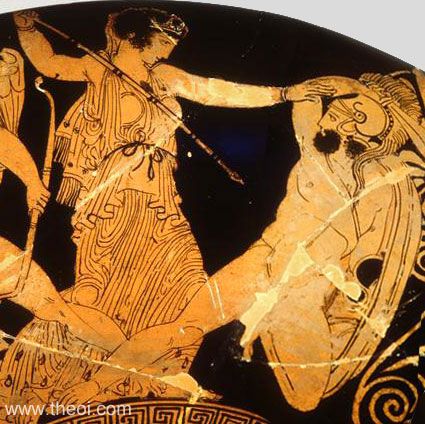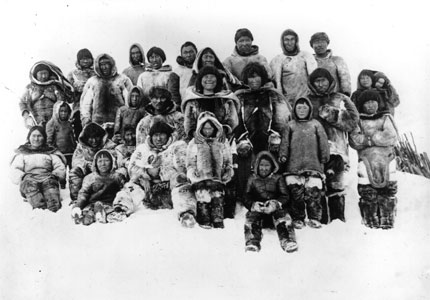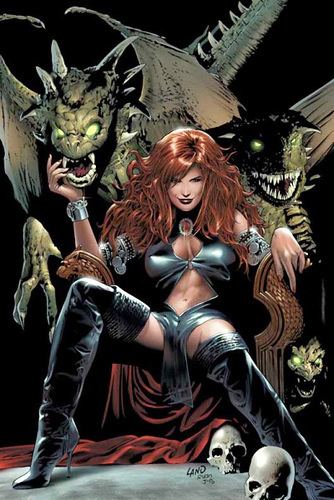It looks like you're using an Ad Blocker.
Please white-list or disable AboveTopSecret.com in your ad-blocking tool.
Thank you.
Some features of ATS will be disabled while you continue to use an ad-blocker.
Let all who read this book be warned thereby that the habitation of men are seen and
surveyed by that Ancient Race of gods and demons from a time before time, and that they
seek revenge for that forgotten battle that took place somewhere in the Cosmos and rent
the Worlds in the days before the creation of Man
I'm looking to create an overview of what is known as the Simon Necronomicon here for the purpose of discussion, in terms of looking at the core Babylonian texts it is based upon, the principles that are involved and the implications thereof.
Of course it is generally accepted that the Necronomicon that were published anon in the 1970's do not represent an authentic work handed down throughout the centuries as the spurious traditions within the publications suggest, and thus they are often termed hoax, however there was attempt to make correspond the core texts utilized with the general themes that Lovecraft associated with such a Necronomicon in his fictional works.
The full text from which i quote is here;
The Necronomicon
[atsimg]http://files.abovetopsecret.com/files/img/cl5232f47a.jpg[/atsimg]
Basically, there are two "sets" of gods in the mythos : the Elder Gods, about whom not
much is revealed, save that they are a stellar Race that occasionally comes to the rescue
of man, and which corresponds to the Christian "Light"; and the Ancient Ones, about
which much is told, sometimes in great detail, who correspond to "Darkness".
These latter are the Evil Gods who wish nothing but ill for the Race of Man, and who constantly
strive to break into our world through a Gate or Door that leads from the Outside, In.
This basic mythos of Lovecraft's does find correspondence in Near Eastern literature dating back to the Sumerians, with regards to the Primordial Gods of Chaos before the establishment of the ordered cosmos by Enlil, and variation of this continued into the Marduk mythos of Babylon.
A development from this in terms of plot leads to;
There are certain people, among us, who are devotees of the Ancient Ones, and who try
to open the Gate, so that this evidently repulsive organisation may once again rule the
Earth. Chief among these is Cthulhu, typified as a Sea Monster, dwelling in the Great
Deep, a sort of primeval Ocean.
"Let them curse it that curse the day, who are skilful to rouse Leviathan." - JOB 3:8
[atsimg]http://files.abovetopsecret.com/files/img/rt5232f486.jpg[/atsimg]
This aspect can also be sourced within old Babylonian literature notably the Maqlu text, which is a series of exorcisms designed to thwart the effects of evil witches and sorcerers who were understood to be drawing upon the powers of Deities associate with the Primordial Chaos, notably Lamashtu and the Seven Gallu Demons, and the Maqlu therefore is a core text of the Necronomicon as shall be seen.
Sumerian Vampire Demons of Primordial Chaos
This realm of Primordial Chaos is perhaps best thought of as the quantum in today's terms.
The Underworld in ancient Sumer was known by many names, among them ABSU or
"Abyss", sometimes as Nar Mattaru, the great Underworld Ocean, and also as Cutha or
KUTU as it is called in the Enuma Elish The phonetic similarity between Cutha and KUTU and Chthonic, as well as Cthulhu, is striking.
This book, according to the mythos, contains the formulae for evoking incredible things
into visible appearance, beings and monsters which dwell in the Abyss, and Outer Space,
of the human psyche.
[atsimg]http://files.abovetopsecret.com/files/img/qz5232f493.jpg[/atsimg]
Moving on to the work itself then;
After the initial Testimony, we come to the chapter entitles "Of the ZONEI and Their
Attributes", Zonei is, of course a Greek word and refers to the planetary, or heavenly
bodies; for they are "zoned", i.e., having set courses and spheres
After the chapter on Zonei, we come to the "Book of Entrance" which is really a system
of self-initiation into the planetary spheres and may have something to do with the
planetary arrangement of the steps of the ziggurats of Mesopotamia, which were seven
storeyed mountains. Not much is revealed to the potential candidate for initiation as to
how these "gates" work, or what he might find there, save to say that the key of one Gate
lies in mastering the Gate before it
The "Incantations of the Gates" follow, and are probably meant to accompany the
preceding chapter, being prayers proper to each of the celestial Gates. The "conjuration of
the Fire God" follows this
The progression through the Planetary gates is in my opinion one of the most impressive reconstructions of the Simon Necronomicon, and how this relates to the ziggurat and associated Deities, it is exactly as i outline here, which is based on current research.
The Sumerian alchemical ziggurat
[atsimg]http://files.abovetopsecret.com/files/img/jr5232f4a4.jpg[/atsimg]
This aspect is also highly interesting as the progression up the seven stepped ladder into the Celestial Realm is a mainstay of Hermetic and Masonic thought, the reason being for this that the Babylonian version had developed into variants such as the Mithraic mysteries and thus become an element of Classical and Western esotericism, thus with the rediscovery of the near Eastern basis during the Late 19th century things had in effect turned full circle.
From the Babylonian to the Classical
THE Gods of the Stars are Seven. They have Seven Seals, each of which may be used in
their turn. They are approached by Seven Gates, each of which may be opened in their
turn. They have Seven Colours, Seven Essences, and each a separate Step on the Ladder
of Lights. The Chaldeans were but imperfect in their knowledge, although they had
understanding of the Ladder, and certain of the formulae
Despite the reconstruction based upon the ziggurat being sound, there is no textual evidence for such magical journeys through the stages having been undertaken by individuals from Sumeria or Babylon, in the Necronomicon it is apparent the individual is expected to make these progressions in astral form, whilst looked over by Watchers;
THIS is the Book of Entrance to the Seven Zones above the Earth, which Zones were
known to the Chaldeans, and to the ancient races that preceded them among the lost
temples of UR. Know that these Zones are governed by the celestial spirits, and that
passage may be had by the Priest through those lands that border on the Unzoned Wastes
beyond. Know that, when Walking thus through the Sea of Spheres, he should leave his
Watcher behind that It may guard his body and his property, lest he be slain unawares
and must wander throughout eternity among the dark spaces between Stars
[atsimg]http://files.abovetopsecret.com/files/img/ri5232f4b1.jpg[/atsimg]
This becomes even more alarming when the nature of the Watchers is described;
The Watcher comes from a Race different from that of Men and yet different from that of
the Gods
The "Conjuration of the Watcher" follows the Fire God conjuration. The word "watcher"
is sometimes used synonymously with "angel", and sometimes as a distinct Race, apart
from angelos: egragori. The Race of Watchers are said not to care what they Watch, save
that they follow orders. They are somewhat mindless creatures, but quite effective.
Wherefore it is wise to conjure It in the Names of the Three Great Watchers Who existed
before the Confrontation from whose borne the Watcher and His Race ultimately derive,
and those Three are ANU, ENLIL, and Master ENKI of the Magick Waters
To demote Enki, Enlil and Anu to the status of mindless Watchers is unthinkable in Sumerian terms, yet tradition suggests these are the three lights of the Masonic Lodge set to Watch over it, Jah-Bul-On respectively, such assumptions and liberties taken are unlikely to end well, as is also the presumption that man can ascend to the level of the Divine.
After the Watcher, comes the MAKLU text, which appears to be a collection of
exorcisms
After this, the "Book of Calling" needs little explanation. It is the grimoire of the
NECRONOMICON, containing the formulae of ritual conjuration, as well as the seals
and diagrams to accompany the rites. It is followed by "The Book of Fifty Names" being
fifty separate powers of the God MARDUK, defeater of Chaos
The Maqlu text as stated previously is indeed a series of exorcisms, within the Necronomicon it is poorly translated and interspersed with gibberish utterances, it's original purpose was to be used against individuals working against one's self by channeling evil spirits, in the Necronomicon it's suggested usage is against the spirits themselves...not really a good idea.
The Nine Tablets of the Ritual Maqlu
Then appears the Centrepiece of the Book, the MAGAN text. The word MAGAN may
mean the Land of the MAGAN which was said to lie in the West of Sumer. For a time, it
seems the name MAGAN was synonymous with the Place of Death - as the Sun 'died' in
the West. Hence, it is a bit confusing as to what MAGAN is really supposed to mean in
this text, but in context the "Place of Death" explanation seems quite valid. The MAGAN
text is nothing more than an incomplete and free-form version of the Creation Epic of
Sumer, along with INANNA's Descent into the Underworld
As stated above that's just what the Magan text consists of apart from Enuma Elish being the Babylonian creation myth not Sumerian.
After the long and poetic MAGAN text, comes the URILLIA text which might be
Lovecraft's R'lyeh Text, and is subtitled "Abominations". It has more specifically to do
with the worship of the Serpent, and the nature of the cults that participate in the
Concelebration of Sin. Again, more conjurations and seals are given, even though the
reader is charged not to use them; an inconsistency that is to be found in many grimoires
of any period and perhaps reveals a little of the magicians's mentality; for there is very
little that is evil to the advanced magus, who cares not if he deals with angelic or demonic
forces, save that he gets the job done
In time, I learned of the names and properties of all the demons, devils, fiends and
monsters listed herein, in this Book of the Black Earth. I learned of the powers of the
astral Gods, and how to summon their aid in times of need. I learned, too, of the frightful
beings who dwell beyond the astral spirits, who guard the entrance to the Temple of the
Lost, of the Ancient of Days, the Ancient of the Ancient Ones, whose Name I cannot
write here.
The culminating texts with regards to invoking the evil Ancient One's actually have a very weak basis in that they are derivative and include excerpts from the old Babylonian Hymn to the Gods of the Night, which simply involved seeking spiritual protection whilst practising Divination;
Prayer to the Gods of the Night
It's usage in such a context is therefore simply silly.
[atsimg]http://files.abovetopsecret.com/files/img/pg5232f4c0.jpg[/atsimg]
In conclusion then i would consider that that hotch potch of texts that comprise the Necronomicon generally in inappropriate context do not constitute any sort of sound guide to spiritual empowerment or advancement, that indeed they are dangerously misleading, but there are suggestions that such practises have been a mainstay of high level esoteric groups other than these offerings to the fringe.
The Necronomicon is notoriously proficient at conjuring up Demons, but do not expect it gives one any control over them, or that the Higher Spiritual Powers look upon such dabblings with anything other than disdain.
My fate is no longer writ in the stars,
for I have broken the Chaldean Covenant by seeking power over the Zonei. I have set
foot on the moon, and the moon no longer has power over me. The lines of my life have
been oblitered by my wanderings in the Waste, over the letters writ in the heavens by the
gods. And even now I can hear the wolves howling in the mountains as they did that
fateful night, and they are calling my name, and the names of Others. I fear for my flesh,
but I fear for my spirit more
Any particular reason to use H.R. Gigiers pics from his version of the Necronomicon with Simons version?
I thought that version was a reimagining of the one first mentioned by H P Lovecraft-he mentions it and its author,the mad arab,a few times in his stories.
Was there an actual real one dating back centuries?-I really thought it was a creation of Lovecraft's.
No there was no actual book, though there were the occultic traditions relating to the Lovecraft themes which ultimately sourced back to Babylon, the Simon Necronomicon then was an attempt to incorporate those elements and thus reconstruct what the fictional work would have involved..if that makes any sense lol.
Ah,I get you now.
There certainly could be influences from ancient Babylon/Sumaria in Hp Lovecrafts stories-the old ones from outer space,their bases/cities built on earth.
The Lovecraft Necronomicon was I believe a channeled book from these ancient other worldly gods if I remember correctly,although he Lovecraft never wrote the actual book-he wrote that it would drive people mad if they read it(one of his overused excuses IMO).
Its mentioned in "The Nameless City" and "the Dunwich horror" if I remember.
He also did a short few pages on the origins of the necronomicon,but I have yet to read that one.
Nice Giger Images BTW-well nice is not the right word,but I am a long term fan of HRG.
Edit:
reply to post by starwarsisreal
It is the book in the evil dead-its a little Lovecraft tribute-many other films and books have similar lovecraft references.
He never would have imagined his legacy like this I bet...
I spent a whole long holiday weekend last year debating this very thing with my oldest daughter- I maintaining that though loosely related and unordered that parts of the Necronomicon were very obviously taken from ancient civilizations mythos and spiritual belief traditions, she from the point of it being completely fictitious with no basis in any ancient religion whatsoever. She refused to see any of the similarities and I refused to un-see them so a truce was reached.
While it is a beautiful work of fiction it is still just that- fiction. There has been much success reported of those using ritual from the book to bring forth dark entities but I think it may be because darkness seeks any entrance it can find and perhaps intent is enough to aid in it's crossing of the veil- JMHO.
It's actual in the sense of somebody in the 70s wrote one to cash-in on the growing popularity of HP Lovecraft and wrote one. Though technically there are 4 or 5 different volumes that have appeared over the years.
None of them are 'real' in the sense of actually being anything other than modern inventions.
The one that gets the most attention in occult circles is the 'Simon Necronomicon', which is the one patched in most closely to modern trends in magical thought. And formed the basis of a belief system utilised by some chaos magicians to this day.
Needless to say I think chaos magic is a ropey proposition at best, and practicing chaos magic by invoking the fictional deities from HP Lovecraft is probably a short-cut to a stay in a psych ward. But each to their own.
I must admit I never liked the Simon Necronomicon, it has much more in common with Brian Lumley's version of the Cthulhu Mythos with the war between 'good' gods and 'evil' gods, whereas HP Lovecrafts intent was to create this world of gods that were really neither 'good' nor 'evil' in human terms, they were so far beyond what we could understand for such words to be meaningless.
Though they were all from our perspective 'evil' and would happily wipe us all out as a species, so to introduce forces of 'good' into this I think defuses the bleak horror that made HPL so unique and his fictional world so lasting.
Yes that's pretty much it, in Lovecraft's day excavations in the Near East were uncovering Babylonian civilization and tablets, and translation of them was begining, and that provided inspiration.
Not until the 1970's then was attempt made to put together what he would sort of have had in mind as constituting the Necronomicon, in terms of the core Babylonian texts.
But as i've suggested the traditions involved had passed from Babylon into the Classical civilizations of the West and taken on various new guises, and these had been influential in Neo-Classical Hermetic tradition and Reformation Masonic thought.
Part of my interest in puttiing this together is with regards to contemporary Techno-Necros that seek to open the gates through the appliance of technology, very much after the Giger tradition
Giger Necronomicon

reply to post by littled16
Well then you were right there, as the source is to actual Babylonian texts.
Painterz
reply to post by starwarsisreal
Needless to say I think chaos magic is a ropey proposition at best, and practicing chaos magic by invoking the fictional deities from HP Lovecraft is probably a short-cut to a stay in a psych ward. But each to their own.
I never knew people did this until this thread...You are correct in your thoughts I think.
1 way ticket to psych ward land.
Which reminds me of "The rats in the walls."
Do not try Lovecraft Interdimensional being worship kids,it ain't worth it.
But DO read his awesome tales,for as an author,he was visionary and disturbingly relevent to so many of those unanswered dark questions which lurk in the shadows today and always.
Silcone Synapse
Painterz
reply to post by starwarsisreal
Needless to say I think chaos magic is a ropey proposition at best, and practicing chaos magic by invoking the fictional deities from HP Lovecraft is probably a short-cut to a stay in a psych ward. But each to their own.
I never knew people did this until this thread...You are correct in your thoughts I think.
1 way ticket to psych ward land.
Yeah, it used to be quite a thing. A friend of mine briefly dated one of London's leading chaos magicians in the late 70s, just when they were really getting into contacting alien intelligences through meditation and recreational drug use.
Most of them lost their minds and/or committed suicide.
I'm not sure how many practitioners are still around?
The scenes are purposefully dream like to connect to your subconscious, yet they are filled with massive amounts of not-so subtle in your face Phallic and Yonic details. Each detail containing even more minute detail to engage your thinking mind but overloading the visual cortex and cerebral purposefully all while triggering the limbic system.
They are designed to provoke an emotional response of repulsion, curiosity masterly combined with primal urges and desire. This sort of imagery creates confusion and for the ill adept along with massive cognitive dissonance. It is designed by a so called dark sorcerer (Giger) in hopes of creating negative conflicting emotions as well as invisible psychic scaring or harm.
This is modern magik with a mix of science and forced alchemy being done, Giger knew what he was provoking and his so called artwork had on the mind. His work creates no feelings of joy, happiness or light and it is not designed to. It is meant to lower your awareness and place those no prepared into a different primal state of consciousness.
Any Necronomicon or Book of the Dead is designed with the sole (soul) purpose of increasing curiosity into more ancient crafts. It is written anecdotally so as to have some deniability as to its true purpose. It teases the reader with illusory spells and incantations which because of its pseudo-fictional nature appear to not work but are actually conditioning the mind. The user will be compelled to look further into the esoteric to see if there is any so called truth behind the fiction. Since the mind has been subtle trained it will now accept the potential of darker magik, falsely believing they can control such forces in known/seen (Nature) and the unseen (Spiritual or Dimensional realms).
Personally I do believe there are Dimensions that have unseen affects on world and our new sorcery (SCIENCE) has yet to identify or tap into them.
However just even if we can it doesn't mean we should...

The Chthulu mythos refers to the ancient pre-Olympian tribalism that used to dominate the world. Where no one could conduct safe business nor accumulate wealth because it was an age of mob rule. An age with no written laws.

Chthonic (/ˈkθɒnɪk/, from Greek χθόνιος – chthonios, "in, under, or beneath the earth", from χθών – chthōn "earth"; pertaining to the Earth; earthy; subterranean), apart from its literal translation meaning 'subterranean', its historical or interpretive definition designates, or pertains to, deities or spirits of the underworld, especially in relation to Greek religion.
Wikipedia / Cthonic

The Necronomicon is referred to as being written on human skin, or made from the flesh of man. It is not something that resembles a book, so much as it is the law of tribalism, and the customs of one's group. Where sacrifice is made of the living, and not for food, but burnt whole, or buried in the earth.

Rolling Stones Concert Altamont
Chthonic law is defined as a system of law centered on the sacred character of the cosmos. According to Professor H. Patrick Glenn, the Chthonic legal tradition emerged through experience, orality and memory. According to him it is the oldest of all traditions and can be understood as the law of a culture or tribe.
Wikipedia / Cthonic Law

The Inuit lived in the Arctic Polar regions and no one who ever studied them found any indication that they had written laws. Only that there was a set way of doing things, and that the Shaman would intervene if someone threatened the Tribal traditions.
"We are told today that Inuit never had laws or "maligait". Why? They say because they are not written on paper. When I think of paper, I think you can tear it up, and the laws are gone. The laws of the Inuit are not on paper."
—Mariano Aupilaarjuk, Rankin Inlet, Nunavut, Perspectives on Traditional Law
Wikipedia / Inuit
So what did Lovecraft write about that scared him so much?
Well, In my opinion he feared that America would return to mob justice, rule by consensus, and that very well educated singular individuals would no longer be recognized as invaluable to the Republic.
Things like this.

He feared that one day Rational man would be considered the insane one,
and that even a civilization as ancient as the Greeks could return to mob
rule, and mob justice.
That well educated and cultured individuals would no longer be safe in public,
and better off behind the walls of an institution.
As I already have said, he wrote what he dreamed bout, not because of society. It was his way of reassuring himself that all it was was nightmares. Being called a monster by your own mother can have really damaging results and Lovecraft is proof of that. Its not because of some old ways, nor was there a necronomicion before the one that he wrote. He is the creator of it, any other version is just re-written or cult lore created to keep people wanting to find out more.
Also, Cthulhu is something he created, not some tribe.
H. P. Lovecraft's initial short story, "The Call of Cthulhu", was published in Weird Tales in 1928 and established the character as a malevolent entity hibernating within an underwater city in the South Pacific called R'lyeh. The imprisoned Cthulhu is apparently the source of constant anxiety for mankind at a subconscious level, and also the subject of worship by a number of human religions (located several places worldwide, including New Zealand, Greenland, Louisiana, and the Chinese mountains) and other Lovecraftian monsters (called Deep Ones[7] and Mi-Go[8]). The short story asserts the premise that, while currently trapped, Cthulhu will eventually return. His worshipers chant "Ph'nglui mglw'nafh Cthulhu R'lyeh wgah'nagl fhtagn" ("In his house at R'lyeh, dead Cthulhu waits dreaming.")[6]
So most of them lost their minds and killed themselves? BS, I went through a fad of trying it all like many people have and none of my coven killed themselves due to the book.
BTW OP great thread, really well done.
Since it is the 13th, Summer is nearly at an end, September is pining away and we are talking about Techno/Demonology my mind wanders to strike a match...
In September of 89' Marvel Comics kicked off their Fall X-men crossover Inferno.
Just as summer is ending a Heatwave embraces New York City as a demon N'astirh plans on a Demonic Invasion of Earth. It kidnaps 13 Babies to help open a portal atop the Empire State Building. Unable to keep the portal open completely he seeks to turn Madelyne Pryor a powerful mutant to her demonic side in order to use her by creating a Bridge between Limbo (The Demonic Dimension) and Earth. After her love (Cyclops) betrays her, Madelyne fully embraces her dark nature becoming Goblin Queen and opens the Gates unleashing the Demons...
In an attempt to Destroy N'astirh he is inadvertently injected with a techno-organic virus, instead realizing the potential of computing power and quantum spell casting he is made more powerful. He becomes more than just a Demon, increasing his magical potential because of the computational powers of his computer virus! With Madelyne opening the Gates he starts to create Hell on earth...

HA, HA! Oh those silly comicbooks...this was of course the very shortened version, but I really could not help thinking I have heard the story before about Gates, unleashed Demons and spurned lovers...
I would have thought a considerable influence on Giger's imagery were the Machine Elfs of the experimental drug culture, and the control aspects that operated beneath the level of the concious mind in terms of the curious Borg like Queen.
The Marvel comic story does seem to give good insight how the considerations of the Necronomicon have found their way into popular culture, i hadn't actually considered it was Friday the 13th today when posting this, but no doubt the scheming little machine elfs had...
-
Of course it was DEI
Dissecting Disinformation: 2 hours ago -
2nd Day Thanksgiving!...(leftovers!!)
General Chit Chat: 3 hours ago
-
New Disney Star Wars Films Failing Test of Time?
Movies: 15 hours ago, 5 flags -
2nd Day Thanksgiving!...(leftovers!!)
General Chit Chat: 3 hours ago, 3 flags -
Of course it was DEI
Dissecting Disinformation: 2 hours ago, 3 flags
-
Of course it was DEI
Dissecting Disinformation • 8 • : Bluntone22 -
2nd Day Thanksgiving!...(leftovers!!)
General Chit Chat • 6 • : DontTreadOnMe -
Mass UAP events. DC. Machester Airport, UFOs over sub base in CT, Nuke bases.
Aliens and UFOs • 25 • : rickymouse -
New Disney Star Wars Films Failing Test of Time?
Movies • 18 • : Popoll -
Unidentified Flying Objects Over U.S. Military Bases in Northeast UK, as of roughly 11 a.m. CST.
Aliens and UFOs • 32 • : Kangawoo2 -
The Party of Peace - Trump Cabinet Picks Targeted with Death Threats
US Political Madness • 51 • : RazorV66 -
-@TH3WH17ERABB17- -Q- ---TIME TO SHOW THE WORLD--- -Part- --44--
Dissecting Disinformation • 3416 • : duncanagain -
Results of the use of the Oreshnik missile system in Dnepropetrovsk
World War Three • 263 • : DontTreadOnMe -
Anyone like the Scorpions?
Music • 23 • : Flyingclaydisk -
The Cost of True Discipleship—Count the Cost
Religion, Faith, And Theology • 5 • : alwaysbeenhere2
